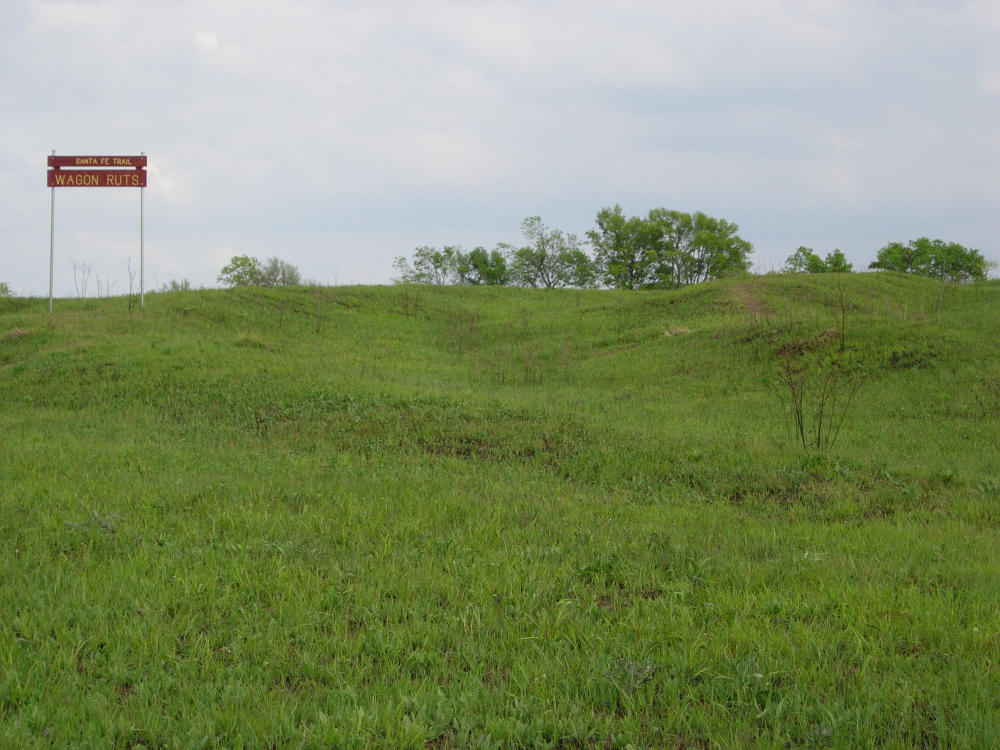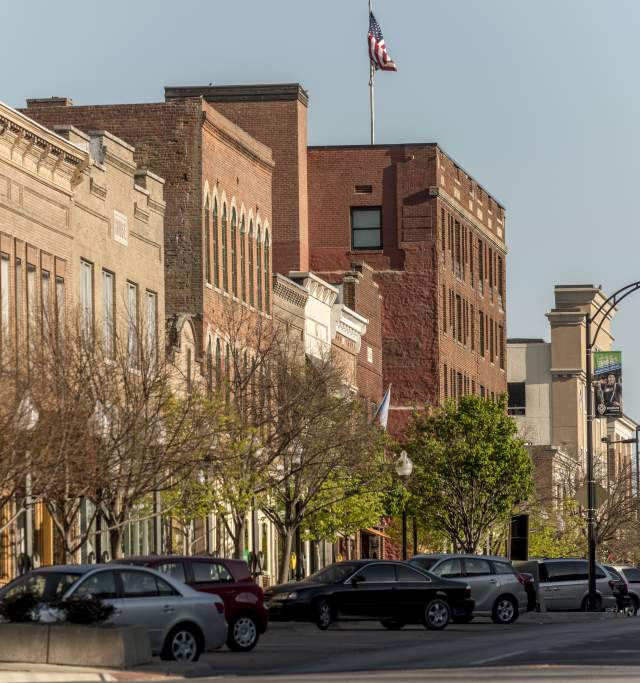Historic Trails
Follow in the footsteps of pioneers

Douglas County’s Historic Trails
Before the Kansas Territory was open to settlers and before Lawrence became a growing frontier city, Native Americans populated the area. Traders and explorers pushed across the rolling prairie along trails like the Oregon and Santa Fe. Native Americans had followed paths between camping and hunting sites, and the paths were later used and expanded by these explorers, trappers, traders, soldiers and settlers.
Lawrence is situated between the Santa Fe and Oregon Trails. The Oregon Trail ran through what is now the city and University of Kansas campus, while the Santa Fe Trail ran just south of the city, along what are now county roads and farmland. Founded in 1854, Lawrence offered various services and supplies to trail travelers.
Not long after the discovery of America, Spanish explorers traveled the route that became the Santa Fe Trail. Coronado and his men, seeking gold, were probably first in 1541. French and Spanish traders continued to use the routes through the next centuries. William Becknell, leading a party of American traders, took the first wagons over the route from Missouri to Santa Fe in 1821. The Trail became the first national highway in the West after the government surveyed it in 1825. During the next several decades, large wagons carried freight along the route and commerce flourished.
Traders were the first to open the Oregon Trail. In 1830, William L. Sublette led the first wagon train to blaze the path. The 81 men planned to rendezvous with fur traders in Wyoming. They followed the Santa Fe Trail, but then turned northward toward what is now Topeka, crossing the Kansas River and continuing westward.
After 1840 settlers traveled the Oregon Trail, crossing the Rocky Mountains, to take up free land in Oregon. In 1841, Bidwell and Bartelson led 60 men, women and children in 13 wagons. Larger groups followed. Unlike the Santa Fe Trail, this was one-way traffic with lighter wagons that could more easily be pulled over the longer, more rugged route. Government explorers and surveyors, as well as trapping and trading caravans, joined the migrants.
The Oregon and Santa Fe Trails were two among a network of trails that led west. Routes varied to follow the easiest, rather than the most direct, routes. Mules and oxen pulling the heavy wagons fared better on the relatively flat upland, even though the actual distance they had to travel was greater.
Trail traffic declined after the Civil War ended in 1865, and railroads rapidly rolled across the Plains. By the 1870s, the wagon trails had become obsolete. Although modern developments have obliterated most physical traces of the trails, wagon ruts are still visible in several locations around Lawrence.







